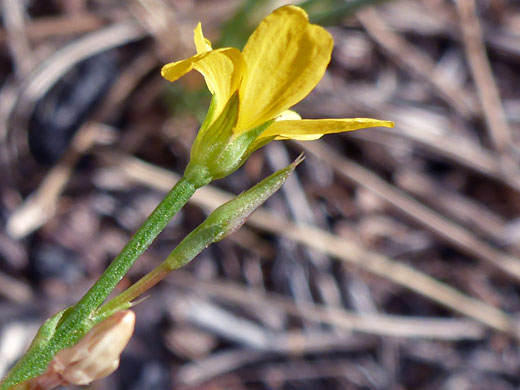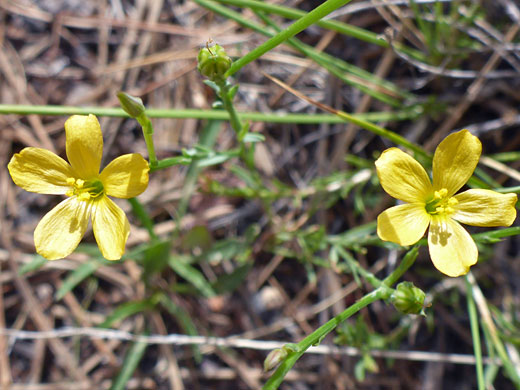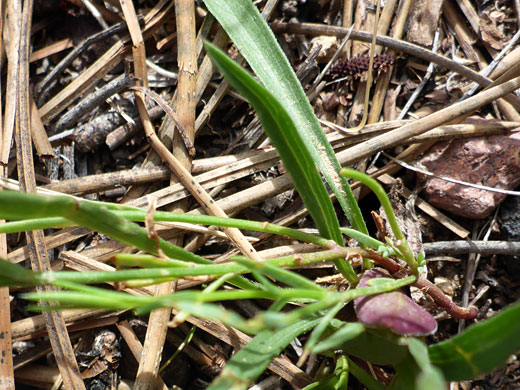Common name:
Southern flax
Family:
Scientific name:
Linum australe
Main flower color:
Range:
From southern Nevada to west Texas, and scattered locations further north
Height:
Up to 20 inches
Habitat:
Open woodland, slopes, grassland, often on cinders, or sand; up to 9,000 feet
Leaves:
Alternate, linear, appressed to the stem, up to 0.8 inches long, with a tiny point at the tip
Season:
June to September
Linum australe has a scattered distribution, most common in central Arizona, but extending from west Texas all the way to northern Montana. The main identifying factor is the sepal tips, as these extend to a light-colored spine; sepals for nearly all other species are merely pointed. Sepals have thin, light brown margins, lined by a few tiny glandular teeth. Sepals are lanceolate in shape, relatively wide at the base, while the yellow petals are oblanceolate, evenly colored bright yellow or orange-yellow, without any darker marks. The five stamens are yellow, and the five styles, which are fused almost to the tip, are topped with a greenish, head-shaped stigma.
Stems may have a faint hair covering near the base but are otherwise hairless, as are the leaves and pedicels. Stems branch several times, and bear short, linear leaves at alternate intervals. Lower stem leaves have at their base a pair of tiny, purplish glands (stipules). Stems are faintly ridged, especially towards the top.
Stems may have a faint hair covering near the base but are otherwise hairless, as are the leaves and pedicels. Stems branch several times, and bear short, linear leaves at alternate intervals. Lower stem leaves have at their base a pair of tiny, purplish glands (stipules). Stems are faintly ridged, especially towards the top.
All Contents © Copyright The American Southwest | Comments and Questions | Contribute | Site Map




